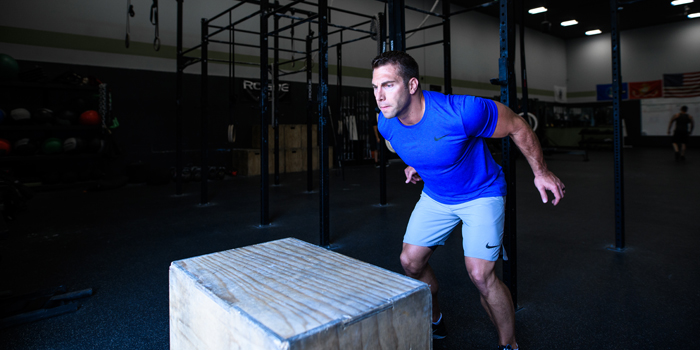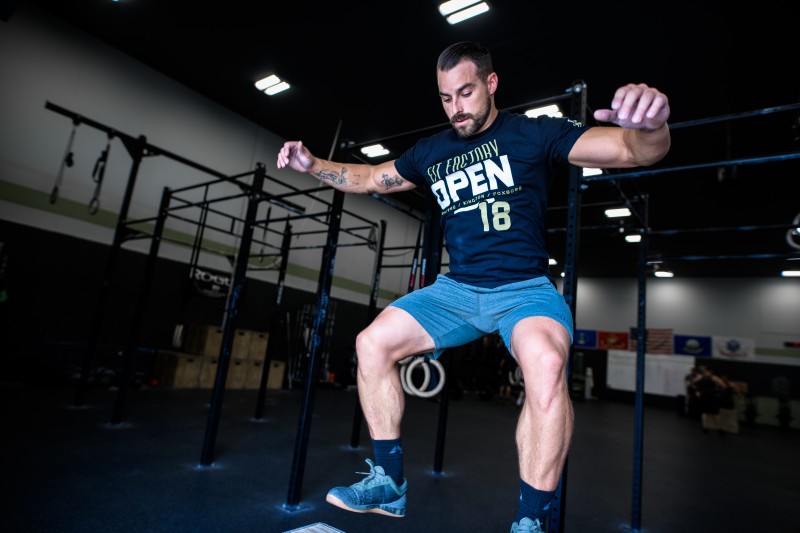
Does your average client really need to be training explosive strength? Yes! Why? Because plyometrics are the most effective way to improve the rate of force development. For this reason, your clients are able to utilize high-threshold motor units to a greater degree than they can with their dynamic effort squats. But the benefits don't end there.
RECENT: The Best Conjugate Training Program
Before we get into the specifics of plyometric program design, let’s first refer to a classic textbook definition of plyometric training from Essentials of Strength Training and Conditioning:
- Mechanical Model: Involves the series elastic component (SEC), the musculotendinous unit that is stretched during eccentric range of motion. When this occurs, the SEC acts as a spring and is lengthened. When it's lengthened, elastic energy is stored and is then able to contribute total force production by allowing muscles to return to their unstretched configuration.
- Neurophysiological Model: Involves potentiation by way of the stretch reflex, which is the body’s involuntary response to muscles being stretched. The reflexive aspect of plyometrics takes place in muscle spindles.
- Stretch Shortening Cycle: Employs the energy storage of the SEC and stimulation of the stretch reflex to facilitate a maximal increase in muscle recruitment.
The value of plyometrics for your clients
Now that we understand the basic physiology of plyometric training, let’s examine the context of using this training for the general population. As people age, Type 2 (aka fast-twitch) muscle fibers deteriorate. This muscle fiber is responsible for gaining lean muscle mass and keeping folks’ basal metabolic rates in check.

This work is relatively easy to teach, and depending on the variation you choose, easy to recover from. We don't need a huge investment of time from both a learning curve and application perspective. Typically, we see more coaches opt for using the Olympic lifts to develop explosive strength, but the Olympic lifts are a mismatch for this special strength and are a better choice for speed-strength work.
Additionally, if you're taking into consideration the time it takes to teach the Olympic lifts and the actual number of your clients that can perform those lifts efficiently enough to derive a speed-strength adaptation, there would be even less case for their inclusion in your program design.
READ MORE: A New Perspective on Proper Plank Execution
When used correctly, plyometric training has been shown to improve the production of muscle force and power, so not only will regular plyometric work help with the overall goal of body composition but it will also improve performance. After working with nearly thousands of clients, the feedback has always been overwhelmingly positive, which helps keep our clients engaged in the process.
Here are a few of our go-to exercises. All four of these variations can be done with added resistance, such as dumbbells, weighted vest, and/or ankle weights, but in most cases for the general population, added resistance usually isn't necessary. We save added resistance with plyometrics for sports-specific training. Some of these variations can also be included in the later stages of your dynamic warm-up to prime the central nervous for the training ahead, so don't forget there are more than a few applications for this work.
- Seated Dynamic Box Jumps
- Seated Dynamic Vertical Jumps
- Kneeling Jumps and Box Jumps
- Single-Leg Box Jump
Putting it all together
While many coaches would assume plyometrics are not needed for the general fitness, I'd urge them to consider the actual physiology of regular plyometric training, how they fit into a weekly plan, and the benefits for aging clients.
I, too, once thought that since I'm not technically an athlete anymore they are not worth spending time on. It wasn't until I was back in graduate school revisiting the tenets of plyometric exercise that I was reminded why this work can be beneficial for clients of all walks of life, even if they’re training for a specific event or sport.
The good news is that it doesn't take a huge investment of time to perform. For five to ten minutes of total work, you can provide your clients with a huge bang for their buck.
Additionally, many of your clients would benefit from some explosiveness in their lives, seeing as most activities they perform are more aerobic and slower in nature. Plyometric work goes a long way and lends itself to your clients' goals and overall health, making its inclusion a no-brainer.
Images courtesy of RX Photography










